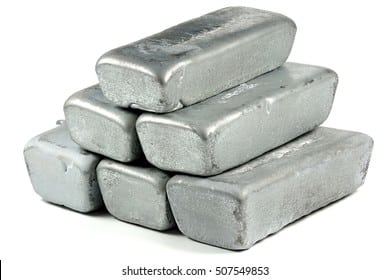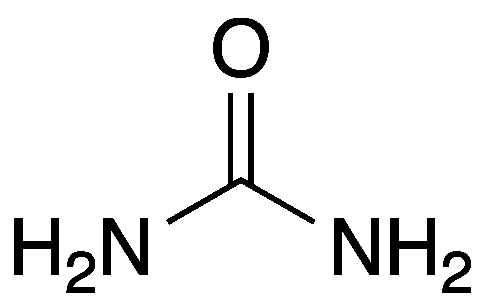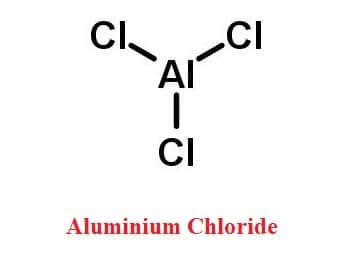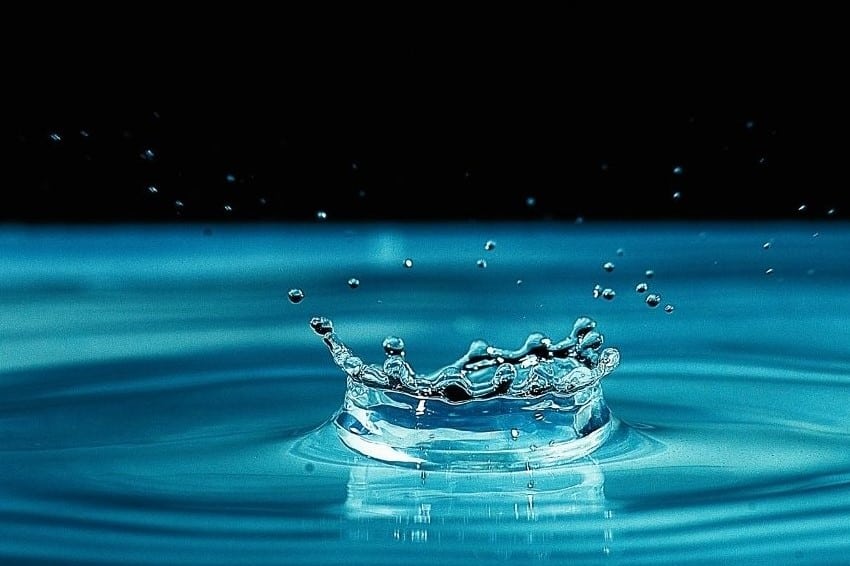Zinc is a lustrous bluish-white metal. At room temperature, it is brittle and crystalline, but when heated between 110°C and 150°C, it becomes ductile and malleable. It is a fairly reactive metal that reacts with dilute acids to release hydrogen and combines with oxygen and other nonmetals.
Approximately three-fourths of zinc metal is consumed as a metal, primarily as a corrosion-resistant coating for iron and steel (galvanized metal), as an alloying metal in the production of bronze and brass, as a zinc-based die casting alloy, and as rolled zinc.

| Element | Zinc (Zn) |
| Electronic shell | [ Ar ] 3d10 4s2 |
| Density | 7.11 g.cm-3 at 20°C |
| Atomic mass | 65.37 g.mol -1 |
| Melting point | 420 °C |
| Oxidation state | +2 |
| Boiling point | 907 °C |
| Zinc uses | Galvanizing iron and steel against corrosion Making brasses and alloys for die-casting. |
| Other traits | High heat capacity and heat conductivity; good conductor. |
Zinc is a low-tensile-strength metal with less than half the tensile strength of mild carbon steel. Although inexpensive mechanical parts can be die cast from zinc, it is not commonly used in load-bearing applications. Pure zinc has low toughness and is brittle in general, but zinc alloys have high impact strength when compared to other die casting alloys.
Brass-Zinc Alloy
Brass, the most common zinc alloy, is used in construction as well as the manufacture of cast items such as musical instruments. Brass is created by fusing zinc and copper. The proportions of copper and zinc can be varied in order to achieve different desired mechanical and electrical properties. Basic brass is composed of roughly 67 percent copper and 33 percent zinc, making it stronger and more durable than copper but not as strong as metals such as steel.
Brass has an excellent combination of mechanical properties such as strength, ductility, wear and corrosion resistance, electrical and thermal conductivity, hardness, and machinability, which makes it suitable for a wide range of applications.
Table of Contents
Zinc-Plated Steel
Zinc-plated steel is steel that has been treated with a zinc layer. It has a thin but solid layer of zinc on the surface that protects the product’s underlying steel. When compared to raw and untreated steel, zinc, of course, provides superior oxidation resistance. In fact, zinc corrodes at about 1/30th the rate of raw and untreated steel. As a result, zinc-plated steel has a natural resistance to oxidation-related damage such as rust and corrosion.
Zinc-plated steel can be produced in a variety of ways. Bathing the steel product in an electrolyte solution is one of the most common methods. Zinc particles cling to the surface of the steel product in the electrolyte solution. The bathing container is subjected to an electrical current.
When the zinc particles are exposed to this electrical current, they attract to the surface of the steel product.
What Is Galvanized Steel?
Galvanized steel refers to steel that’s been galvanized. Like zinc plating, Zinc galvanization is a zinc treatment process that protects against oxidation.
The hot-dip method is commonly used to produce galvanized steel.
The method, as the name implies, involves the use of heated, molten zinc.
In a furnace, zinc particles are melted. The steel is then immersed in freshly molten zinc.
It is allowed to cool after the steel product has been removed.
Cooling causes the zinc particles to harden, resulting in the formation of a solid barrier around the steel product.
Zinc Hydroxide
Zinc hydroxide is an inorganic chemical compound with an amphoteric character and may dissolve in both a strong basic and an acid solution. It is frequently used as a galvanic material to prevent metal substrate corrosion. The zinc hydroxide formula is Zn(OH)2.
Summary
- Zinc metal is the low-melting metal of Group 12 (IIb, or zinc group) of the periodic table,
- Every tonne of Earth’s crust contains 65 grams (2.3 ounces) of zinc.
- Zinc is a component of some enzymes that digest protein in the gastrointestinal tract.
- used in more than 300 enzymes.
- zinc-plated steel is created using an electrical current, whereas galvanized steel is typically created using the hot-dip method.
Related Topics
Is Titanium Magnetic?
Valence Electron Easy Definition
Is Aluminum Conductive?
Electron Configuration for Calcium
Liquid Oxygen-Cryogenic Liquid
Is Chlorine a metal?
Is Hydrogen a Metal?
Frequently Asked Questions (FAQs)
Some of the frequently asked questions are given below. If you have any questions, feel free to comment or send an email to [email protected]
1. What is sulfur electronic configuration?
Sulfur electronic configuration is 1s2 2s2 2p6 3s2 3p4
2. What is CLF3 molecular geometry?
CLF3 has a T-shaped molecular geometry and trigonal bipyramidal electron geometry. This molecule has two lone pairs and three bound pairs, according to the ClF3 Lewis structure. ClF3 is a polar compound.
3. What is Sulfur hexafluoride?
Sulfur hexafluoride (SF6) is a non-toxic gas that is used in a variety of applications due to its inert properties. While SF6 is non-toxic when used properly, toxic byproducts can be produced during electrical discharges within SF6-filled equipment, posing a threat to the health of workers who come into contact with them.
4. What is Sulfur trioxide?
SO3 (sulfur trioxide) is a chemical compound. It is available in three forms: gaseous monomer, crystalline trimer, and solid polymer. It is solid at just below room temperature and has a relatively narrow liquid range. Gaseous SO3 is the primary precursor to acid rain.
5. Is Ammonia (NH3) is a polar molecule?
Ammonia (NH3) is polar because it has three Nitrogen-Hydrogen bond dipoles that do not cancel out. In each bond, nitrogen is more electronegative than hydrogen. The polar nature comes from the unequal distribution of charges among both nitrogen and hydrogen atoms.
6. What is the weight of water?
At 39.2°, the density of water is one kilogram per liter (kg/L). This means that one liter (L) of water weighs one kilogram (kg), while one milliliter (mL) of water weighs one gram (g). One gallon of water weighs 8.345 pounds in standard US measurements.
7. Is Titanium magnetic material?
Titanium is a paramagnetic substance which means it, is only mildly attracted to magnets. The presence of four unpaired electrons in its electrical structure is the primary cause of its paramagnetic characteristic. Check the full article “Is titanium magnetic material?”.
8. Is zinc a strong metal?
Zinc is a low-tensile-strength metal with less than half the tensile strength of mild carbon steel.
9. What is made of zinc metal?
Zinc metal is primarily used in galvanizing iron and steel against corrosion and in the manufacture of brasses and alloys for die-casting. In addition, batteries, brass, and American pennies are some of the most prevalent everyday applications of zinc. The galvanizing process, which prevents corrosion of steel and iron, is a major industrial usage of zinc.
10. What are zinc metal properties?
At room temperature, zinc metal is brittle and crystalline, but when heated between 110°C and 150°C, it becomes ductile and malleable.
11. What are examples of alternative fuels?
Alternative fuels include gaseous fuels such as hydrogen, natural gas, and propane; alcohols such as ethanol, methanol, and butanol; vegetable and waste-derived oils; and electricity. Check another related article “alternative fuel vehicles”.
12. What is Stress in physics?
The restoring force per unit area is defined as stress. When we apply an external force to the body to change its form, a restoring force emerges in the opposite direction.
Author
Umair Javed
Umair has been working at Whatsinsight since 2020 as a content writer.
He has a Masters degree in Materials Science.
More Interesting Topics
Mass vs Weight| 5 Easy Examples
Specific Heat of Water
Why Does Oil Float on Water?
How Much is a Liter of Water?
The Specific Gravity of Water
Density of Water in g/ml-Accurate Value
The Density of Water lbs/U.S gal
- BCl3 Lewis Structure in four simple steps - November 1, 2023
- PH3 Lewis Structure in four simple steps - October 8, 2023
- PF3 Lewis structure in four simple steps - September 24, 2023



